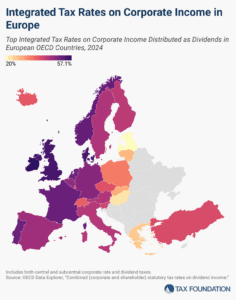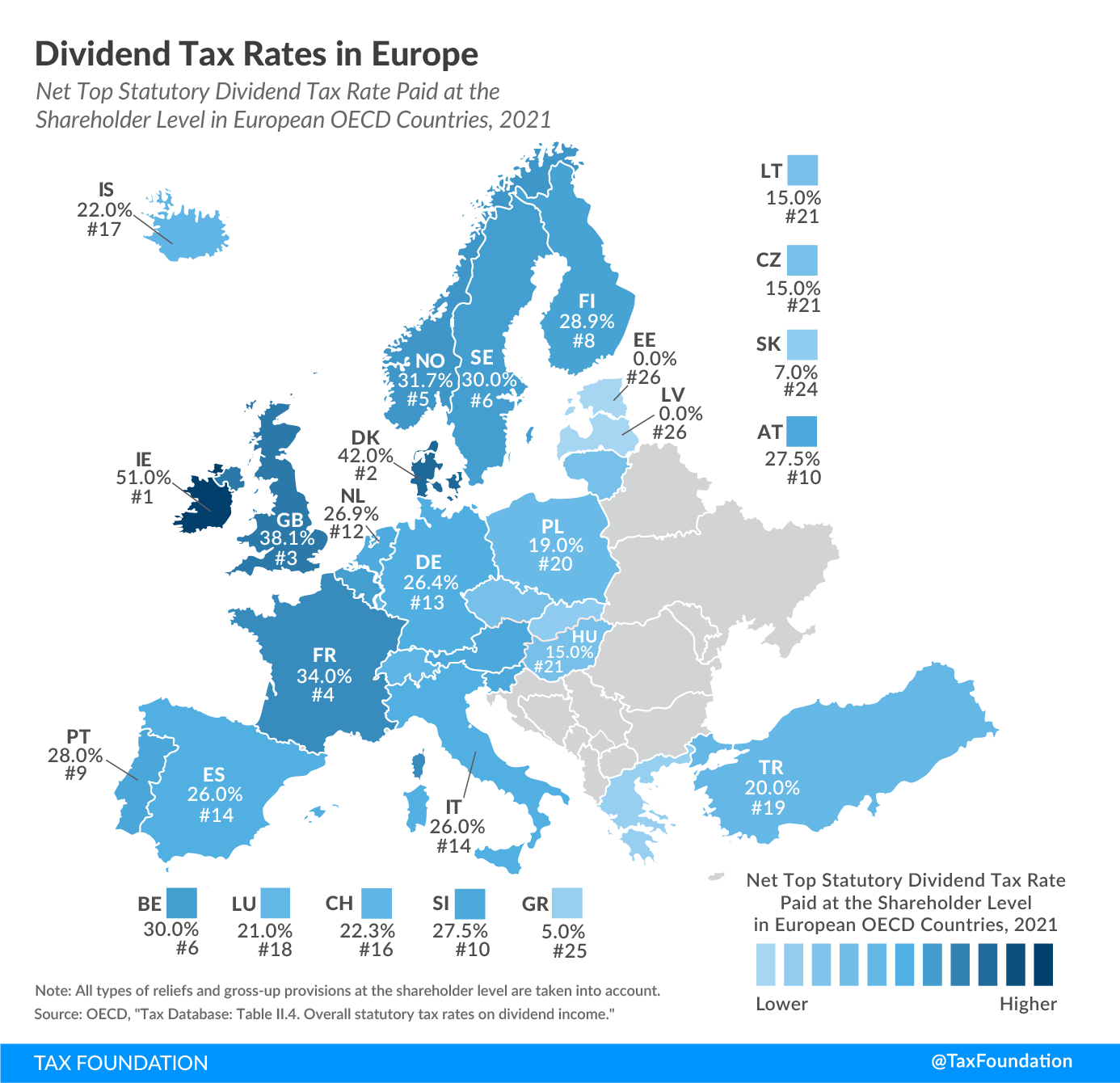
Dividend Tax Rates in Europe, 2021
2 min readBy:Many countries’ personal income taxA tax is a mandatory payment or charge collected by local, state, and national governments from individuals or businesses to cover the costs of general government services, goods, and activities. systems tax various sources of individual income—including investment income such as dividends and capital gains. Today’s map shows how dividend income is taxed across European OECD countries.
A dividend is a payment made to a corporation’s shareholders from corporate after-tax profits. In most countries, such dividend payments are subject to dividend tax. The dividend tax rates shown in the accompanying map reflect the top personal dividend tax rate, taking account of all imputations, credits, or offsets.
Ireland has the highest top dividend tax rate among European OECD countries, at 51 percent. Denmark and the United Kingdom follow, at 42 percent and 38.1 percent, respectively.
Estonia and Latvia are the only European countries covered that do not levy a tax on dividend income. This is due to their cash-flow-based corporate tax system. Instead of levying a dividend tax, Estonia and Latvia impose a corporate income tax of 20 percent when a business distributes its profits to shareholders.
Of the countries that do levy a dividend tax, Greece has the lowest tax rate, at 5 percent, followed by Slovakia, at 7 percent.
European OECD countries levy an average top dividend tax rate of 23.5 percent.
In many countries, corporate profits are subject to two layers of taxation: the corporate income taxA corporate income tax (CIT) is levied by federal and state governments on business profits. Many companies are not subject to the CIT because they are taxed as pass-through businesses, with income reportable under the individual income tax. at the entity level when the corporation earns income and the dividend tax or capital gains taxA capital gains tax is levied on the profit made from selling an asset and is often in addition to corporate income taxes, frequently resulting in double taxation. These taxes create a bias against saving, leading to a lower level of national income by encouraging present consumption over investment. at the individual level when that income is passed to its shareholders as either dividends or capital gains. Some countries, however, have integrated their taxation of corporate and dividend/capital gains income to eliminate such double taxation.
Stay informed on the tax policies impacting you.
Subscribe to get insights from our trusted experts delivered straight to your inbox.
Subscribe




